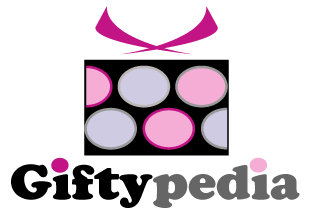Mardi Gras Festival
From Giftypedia
Laissez Les Bons Temps Rouler! Let the good times roll!
Mardi Gras is an annual festival marking the final day before the Christian fast of Lent, a 40-day period of self-denial and abstinence from merrymaking. Lent ends on the Saturday before Easter Sunday.
The term Mardi Gras is French for "Fat Tuesday."[1]
The traditions of Mardi Gras are said to be dated back to the 14th century. It has since then evolved into an elaborate celebration with one of the most famous being in Rio de Janiero, Brazil, and New Orleans being the biggest in the United States.
Some countries refer to this time of celebration as Carnival.
History of Mardi Gras
Mardi Gras started in Mobile, Alabama at 27 Mile Bluff in 1703 when it was a colony of French soldiers. [2] In the earlier days of this festival, it was called Carnival. Carnival, which in Latin is carne vale meaning “farewell to meat,” was the days before Lent, from Epiphany (January 6th) until Shrove Tuesday (the day before Lent). During these days, it was a time for feasting and indulging on everything Lent forbade. This meant each household would gorge on fatty products like milk, eggs, cheese, butter, and even fried dough. This dough, called beignet in New Orleans, is like a dough nut with no hole and was made intentionally to help rid the house of all fatty foods. The party really started 3 days before Ash Wednesday came to a peak on Shrove Tuesday as this was the day for the most eating and partying. Hence the name Mardi Gras, or Fat Tuesday, was coined here in the United States.
Mardi Gras Traditions
The celebration always consists of lavish costumes, fireworks, parades with beautifully decorated floats, dances and balls with elaborate masks and attire, and of course feasting. The festive decoration is colorful and spectacular, with much focus on the three traditional colors for this event: purple, green, and gold. Each of these colors with their special meanings represent the ideas and reasons for this bash, with purple representing justice, green faith, and gold power.
Krewes - Members of each organization that parades with floats. Each parade has a different theme every year.
King Cake and 'the baby' - An oblong or oval shaped cinnamon dough cake, glazed with frosting and sprinkled with colored sugar. Hidden on the underside (after baking) of each King Cake is a small plastic figurine in the shape of a baby. Whoever finds the baby gets the honor of supplying the next King Cake or throwing the next Mardi Gras Party.
Much influence is given on this event from the Carnival King. The King played his role by representing the sinfulness and corruption of the people. At the end of the celebration, the king (a fake king) was burned to symbolize the fall of their folly. This tradition has faded, but the idea of the Carnival King and the colors has remained, along with the feasting and extravagant promotion of this unique Holiday.
Gifts for Mardi Gras
Mardi Gras has a long tradition of parties and parades. The most popular items a related to the New Orleans[3] colors of Mardi Gras; gold, purple and green.- Costumes - Colorful masks, feather boas, funny hats.
- King Cake[4] - The "King's Cake" represents the
three kings who brought gifts on Epiphany. It is decorated with the three colors of Mardi Gras. Whoever gets the 'baby' is officially the King or Queen of the party.
- Beads - Plastic necklaces.
- Dubloons[5] - Aluminum coin-like objects bearing the krewe's (Carnival Club) insignia or logo on one side and the parade's theme on the reverse.
- Throws - Inexpensive trinkets tossed from floats. Doubloons, plastic cups and plastic medallion necklaces. Different cities are known for their unique additions to the list of throws, including plastic crawfish, peanut butter toffee, and Moon Pies(R).
- Mardi Gras Themed T-Shirts - The selections range from the general; jesters, masks, "Throw Me Something, Mister!" to the more adult versions sold in the French Quarter of New Orleans.
- Food - Coffee and beignets, jambalaya, red beans and rice, dirty rice, seafood, etouffee, Hurricane (the drink), beer, Mint Julep, Bloody Mary.
- Music - New Orleans style jazz, of course!
Related Guides
References
- ↑ Encarta: Mardi Gras
- ↑ Encarta: History of Mardi Gras in Mobile
- ↑ History of Mardi Gras in New Orleans
- ↑ The Importance of the King Cake
- ↑ Mardi Gras Dubloons
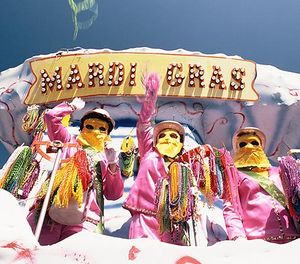
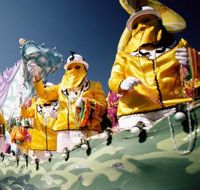
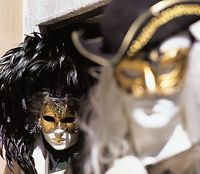
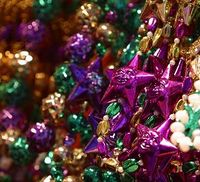

 Printer Friendly
Printer Friendly
